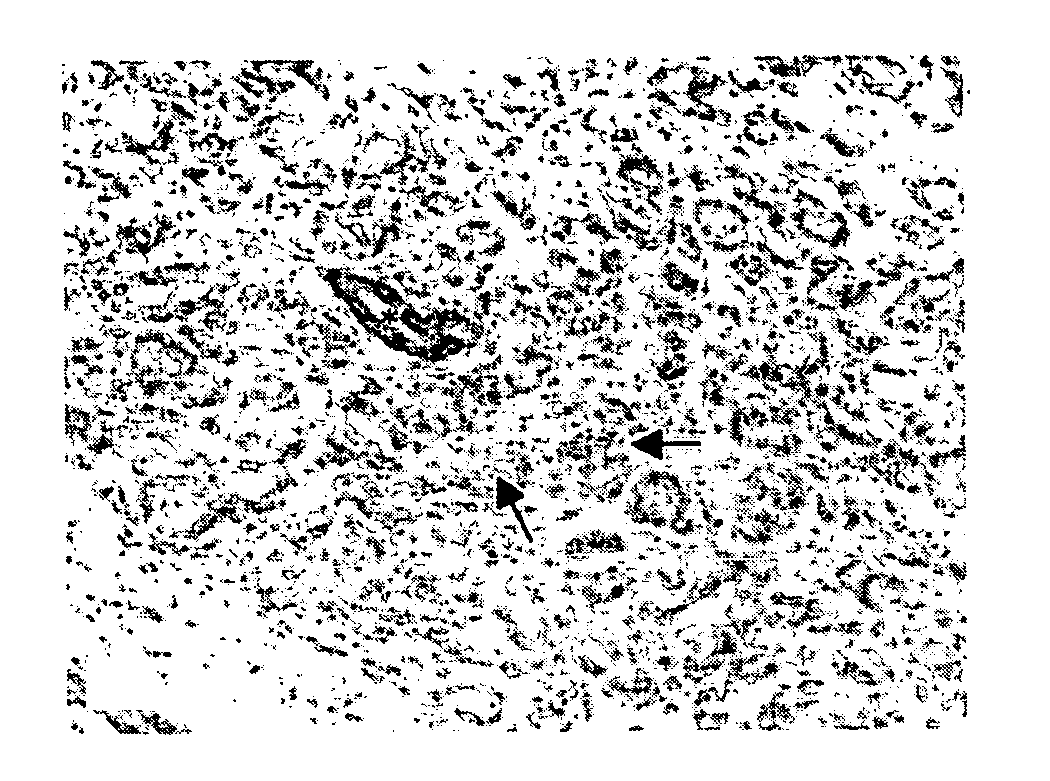Methods of diagnosing and treating prostate cancer
a prostate cancer and prostate cancer technology, applied in the field of prostate cancer diagnosis and treatment, can solve the problems of inaccurate indicators, high cost and time consumption, and the inability to report an inexpensive, reliable and relatively fast bp1 expression screen using anti-bp1 antibodies, so as to monitor the effectiveness of prostate cancer treatment and achieve the effect of a high level of bp1 expression
- Summary
- Abstract
- Description
- Claims
- Application Information
AI Technical Summary
Benefits of technology
Problems solved by technology
Method used
Image
Examples
Embodiment Construction
[0015] BP1 is a gene and is a member of the homeobox gene superfamily of transcription factors that are essential for early development. Recent studies, however, revealed that BP1 mRNA was present in 80% of breast infiltrating ductal carcinoma (IDC), but it was absent in 5 of 6 matched normal controls, as measured by RT-PCR. Studies also revealed that BP1 expression was significantly higher in estrogen receptor (ER) negative that in ER positive breast tumors, 100% versus 73% (p=0.03), and in African Americans than in Caucasians, 89% versus 57% (p=0.04). Subsequent immunohistochemical studies showed that BP1 protein was barely detectable in normal reduction mammoplastics, while it was seen in 21.4%, 46%, and 81% of the hyperplastic, in situ, and invasive breast lesions, respectively. The preferential expression of BP1 in IDC, in ER negative tumors, and in African American women, if confirmed on a larger scale, could have a number of scientific and clinical implications. First, as the...
PUM
| Property | Measurement | Unit |
|---|---|---|
| temperature | aaaaa | aaaaa |
| temperature | aaaaa | aaaaa |
| time | aaaaa | aaaaa |
Abstract
Description
Claims
Application Information
 Login to View More
Login to View More - R&D
- Intellectual Property
- Life Sciences
- Materials
- Tech Scout
- Unparalleled Data Quality
- Higher Quality Content
- 60% Fewer Hallucinations
Browse by: Latest US Patents, China's latest patents, Technical Efficacy Thesaurus, Application Domain, Technology Topic, Popular Technical Reports.
© 2025 PatSnap. All rights reserved.Legal|Privacy policy|Modern Slavery Act Transparency Statement|Sitemap|About US| Contact US: help@patsnap.com


